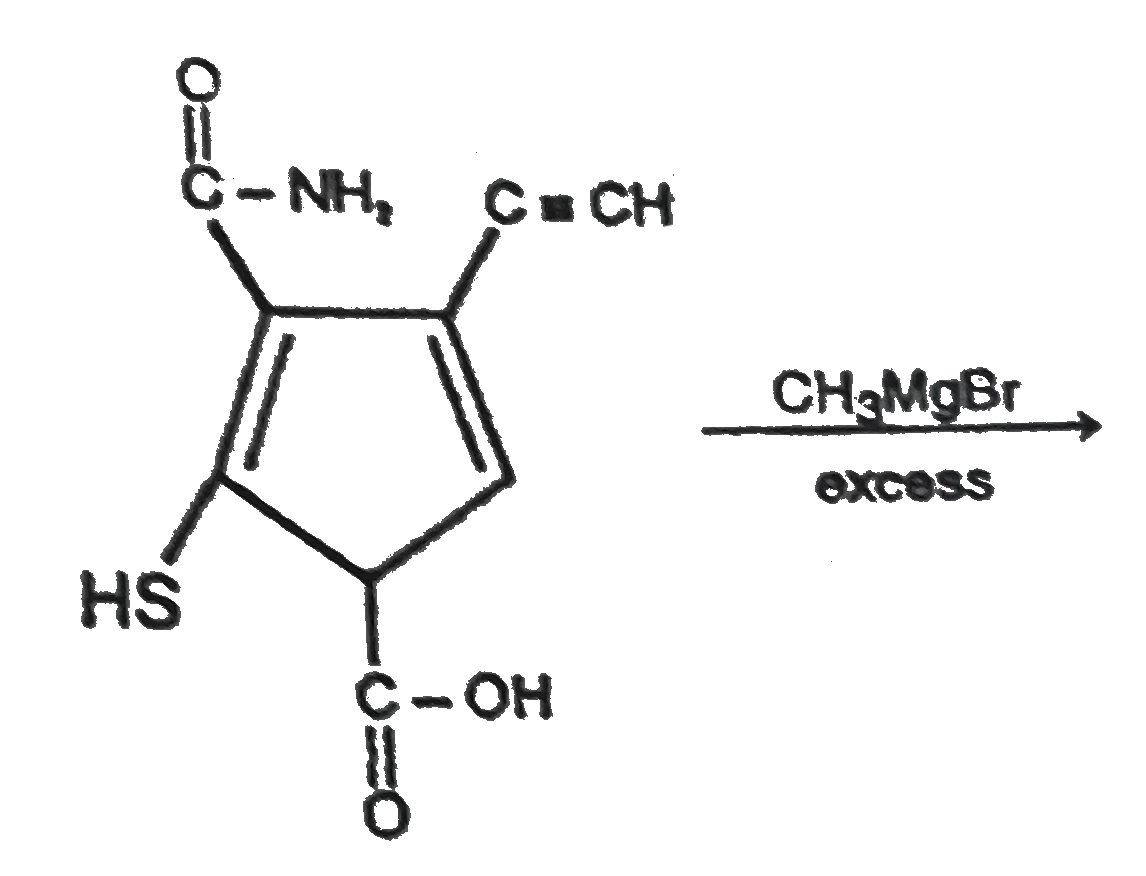For reaction A+2B→C. The amount of C formed by starting the reaction with 5 mole of A and 8 mole of B is :
5 moles
8 moles
16 moles
4 moles
The correct Answer is:D
A1mol+2B2mol→C1 mol
8 moles of B require 4 moles of A. Therefore, limiting reagent is B.
2 moles of B give 1 mole of C
∴8 moles of B give =12×8=4 moles of C.
Topper's Solved these Questions
- BOOK - MODERN PUBLICATIONCHAPTER - SOME BASIC CONCEPTS OF CHEMISTRY EXERCISE - COMPETITION FILE (MULTIPLE CHOICE QUESTIONS FROM COMPETITIVE EXAMINATIONS)(JEE MAIN & OTHER STATE BOARDS ENGINEERING ENTRANCE)56videos
SOME BASIC CONCEPTS OF CHEMISTRY
- BOOK - MODERN PUBLICATIONCHAPTER - SOME BASIC CONCEPTS OF CHEMISTRY EXERCISE - COMPETITION FILE (MULTIPLE CHOICE QUESTIONS FROM COMPETITIVE EXAMINATIONS) (JEE ADVANCE FOR IIT ENTRANCE)1videos
SOME BASIC CONCEPTS OF CHEMISTRY
- BOOK - MODERN PUBLICATIONCHAPTER - SOME BASIC CONCEPTS OF CHEMISTRY EXERCISE - COMPETITION FILE (MULTIPLE CHOICE QUESTIONS)30videos
SOME BASIC CONCEPTS OF CHEMISTRY
- BOOK - MODERN PUBLICATIONCHAPTER - S-BLOCK ELEMENTS ( ALKALI AND ALKALINE EARTH METALS ) EXERCISE - UNIT PRACTICE TEST13videos
S-BLOCK ELEMENTS ( ALKALI AND ALKALINE EARTH METALS )
- BOOK - MODERN PUBLICATIONCHAPTER - STATES OF MATTER : GASES AND LIQUIDSEXERCISE - UNIT PRACTICE TEST13videos
STATES OF MATTER : GASES AND LIQUIDS
Similar Questions
Knowledge Check
- Question 1 - Select One
For a reaction A+3B→C+D the amount of C formed by starting the reaction with 5 moles of A and 9 moles of B is ____________.
A2 molesB3 molesC4 molesD5 moles - Question 2 - Select One
For reaction A+2B→C. The amount of C formed by starting the reaction with 5 mole of A and 8 mole of B is :
A5 molesB8 molesC16 molesD4 moles - Question 3 - Select One
For the reaction A+2B→C, 5 moles of A and 8 moles of B will produce
A5 moles of CB4 moles of CC8 moles of CD13 moles of C
For the reaction A+2B→C,5moles of A and 8moles of B will produce :-
View SolutionFor the reaction, X+2Y→Z
5 moles of X and 9 moles of Y will produce:View SolutionFor the reaction A+B⇔C+D taking place in a 1 L vessel, equilibrium concentration of [C]=[D]=0.5M if we start with 1 mole each A and B. Percentage of A converted into C if we start with 2 moles of A and 1 mole of B, is
View SolutionFor the reaction A+B⇔C+D taking place in a 1 L vessel, equilibrium concentration of [C]=[D]=0.5M if we start with 1 mole each A and B. Percentage of A converted into C if we start with 2 moles of A and 1 mole of B, is
View SolutionThe reaction A →B follows first order reaction. The time taken for 0.8 mole of A to produce 0.6 mole of B is 1 hour. What is the time taken for conversion of 0.9 mole of A to produce 0.675 moles of B?
View Solution


